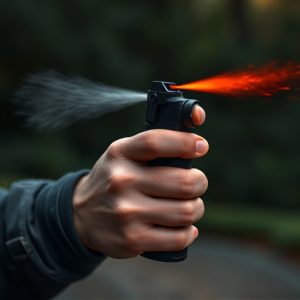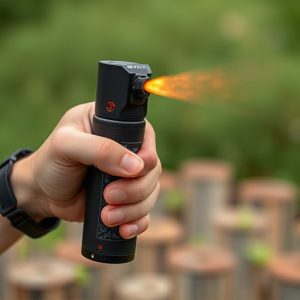Bear Spray vs. Personal Pepper Spray: Choosing Your Self-Defense Weapon
Choosing between bear spray and personal pepper spray depends on whether you're facing a bear o…….
Choosing between bear spray and personal pepper spray depends on whether you're facing a bear or a human aggressor. Bear spray is more effective at a distance, against large animals, but costs more. Pepper spray offers higher concentration for close-range defense in urban settings, yet may be less effective outdoors due to wind. Both have legal restrictions that vary by region.
In the realm of personal protection, Bear Spray and Personal Pepper Spray stand out as popular yet distinct options. This article delves into the intricacies of these self-defense devices, shedding light on their key differences and unique advantages/disadvantages. Whether in wilderness settings or urban areas, understanding the nuances of Bear Spray Vs Personal Pepper Spray is crucial for making an informed choice. We explore these alternatives comprehensively to help you choose the right tool for your safety needs.
- Understanding Bear Spray and Personal Pepper Spray: Key Differences
- Pros and Cons of Each Protection Device
- Choosing the Right Self-Defense Tool: A Comprehensive Comparison
Understanding Bear Spray and Personal Pepper Spray: Key Differences
Pros and Cons of Each Protection Device
Pros and Cons of Bear Spray vs Personal Pepper Spray
One of the most popular personal protection devices is bear spray, known for its wide-range effectiveness against bears and other large wild animals. Its primary pro is that it’s a non-lethal option, giving users time to escape or seek help. It’s easy to use with just one hand and can be effective from a distance of up to 20 feet (6 meters). However, bear spray has cons, too; it’s expensive compared to personal pepper spray, and its range is limited, requiring close-up application for maximum effectiveness against smaller threats like humans or aggressive dogs.
Personal pepper spray, on the other hand, offers a more affordable option with a stronger concentration of capsaicin, making it highly effective in neutralizing assailants within a closer range (around 4 to 5 feet or 1.2 to 1.5 meters). It’s compact and easily portable, perfect for self-defense in urban settings. However, pepper spray can be affected by wind or weather conditions, reducing its effectiveness outdoors, and it may not provide the same level of safety against large animals as bear spray does. Still, for specific situations and needs, personal pepper spray offers a convenient and cost-effective solution.
Choosing the Right Self-Defense Tool: A Comprehensive Comparison
When it comes to self-defense, choosing the right tool is paramount. One popular option is bear spray, known for its wide range and ability to deter aggressive animals. However, personal pepper spray offers a more targeted approach, temporarily blinding and disorienting assailants.
In comparing bear spray vs personal pepper spray, consider factors like range, effectiveness, and legality. Bear spray typically has a longer range, making it useful against larger threats. Personal pepper spray, on the other hand, provides close-quarters protection, ideal for intimate situations. Legality also varies; some areas restrict or ban certain types of spray, so thorough research is essential before purchasing.
When it comes to personal protection, both bear spray and pepper spray offer effective deterrents against potential threats. However, understanding their distinct differences is key to making an informed choice. In terms of intensity and range, bear spray excels in numbing bears’ senses for a longer duration, while personal pepper spray delivers a powerful punch with immediate effects, rendering the attacker temporarily disabled. Choosing between them depends on your specific needs: bear spray is ideal for outdoor enthusiasts facing bear encounters, whereas pepper spray is a versatile option for self-defense scenarios in close quarters. Ultimately, both serve as valuable tools to ensure safety and peace of mind in unpredictable situations, making them worthy investments for anyone prioritizing personal protection.


